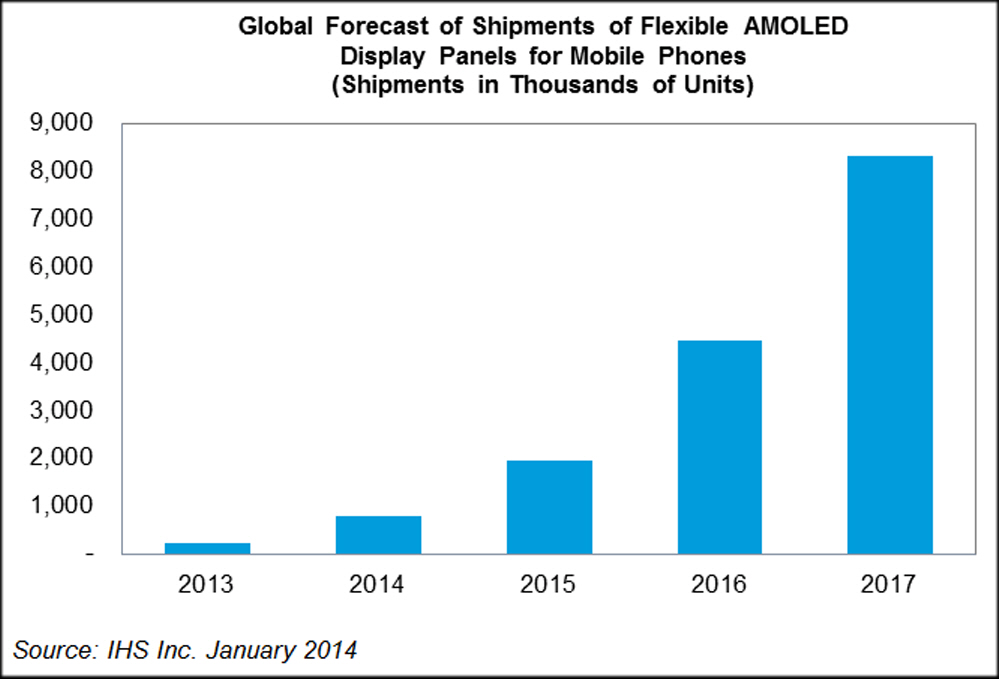Several days ago, at the beginning of the 2014 Consumer Electronics Show (CES), LG Electronics announced that it will ship a curved smartphone using a flexible display to the U.S. market. LD of course recently launched its LG G Flex in South Korea, so it is entirely possible that we will - as LG claims - see a first such device in the U.S. before Q1 2014 is out. That would be rather exciting to see, in particular because the Flex doesn’t only sport a curved display but in fact actually does flex - the entire body is truly bendable, as the video below shows.
One would think after seeing the video that LG is truly ready to play here and perhaps ready to ship millions of flexible devices. However you would be wrong. According to IHS serious technical challenges remain to be conquered when it comes to actually delivering flexible active-matrix organic light-emitting diode (AMOLED) displays and in large quantities. The problem is in getting enough of a usable yield to ship large quantities.
Based on data from the IHS Display Materials and Components service report, "OLED Displays Market Tracker – Q4 2013," global shipments of flexible AMOLED smartphone display panels are projected to be 814,000 units in 2014. IHS projects that shipments will remain limited throughout 2015, 2016 and 2017, reaching only 1.9 million, 4.5 million and 8.3 million units, respectively, during those years. The chart below shows the IHS global forecast of shipments of flexible AMOLED smartphone panels.

Vinita Jakhanwal, director of mobile and emerging displays and technology at IHS says that, "As shown by the announcement of the G Flex today from LG, there’s a great deal of interest from the industry and the marketplace in the use of flexible display technology in smartphones. However, initial production is likely to be curtailed by numerous pending technical issues related to producing flexible AMOLED displays. As these issues are resolved - and the cost of flexible AMOLED declines - shipments will rise in the coming years."
The real challenge in flexible AMOLED display production is in finding the right material to replace glass that is both optically superior while achieving a stable manufacturing process. We doubt that we will see anything optically superior but the flex more than compensates for this. This materials issue however drives up cost - the materials currently being used and the processes employed to achieve stabilized production are not cheap.
Jakhanwal points out some technical details: LG is manufacturing its curved AMOLED based on either a 4.5-generation or a 6th-generation plastic substrate in its AP2 E2 line. Samsung Display meanwhile has also started mass production of flexible displays for mobile applications producing its flexible AMOLED screens based on a 5.5G plastic substrate in the A2 Ph3 line. We confess we only have a superficial understanding of what all of that actually means.
The bottom line in any case is that production has actually started. All that remains is to get the production yields up. 2017, per the chart above suggests the companies still have a bit of time to do so. Meanwhile, we look forward to seeing an actual LG G Flex do its flexing.
 QUICK LINKS
QUICK LINKS